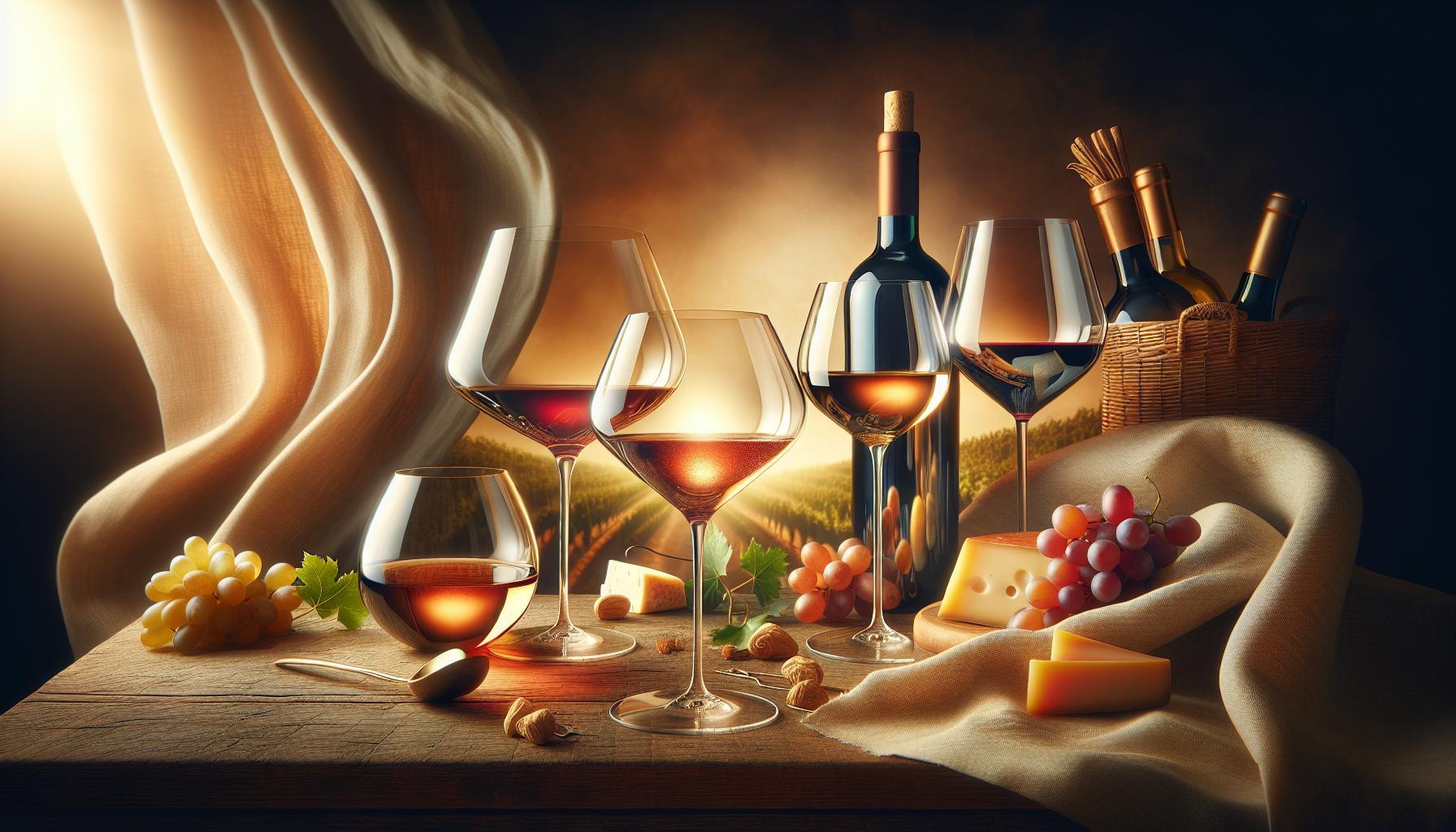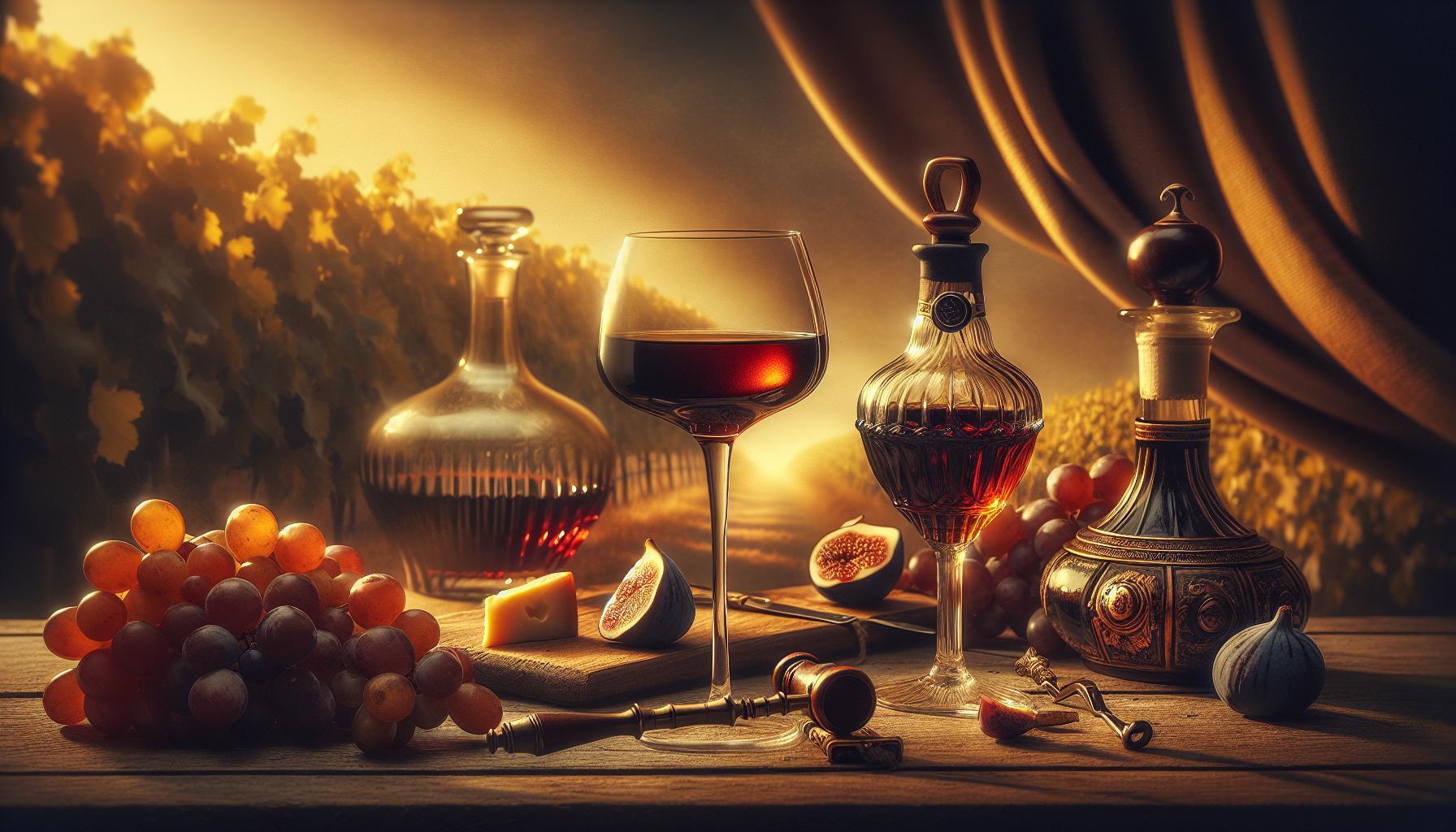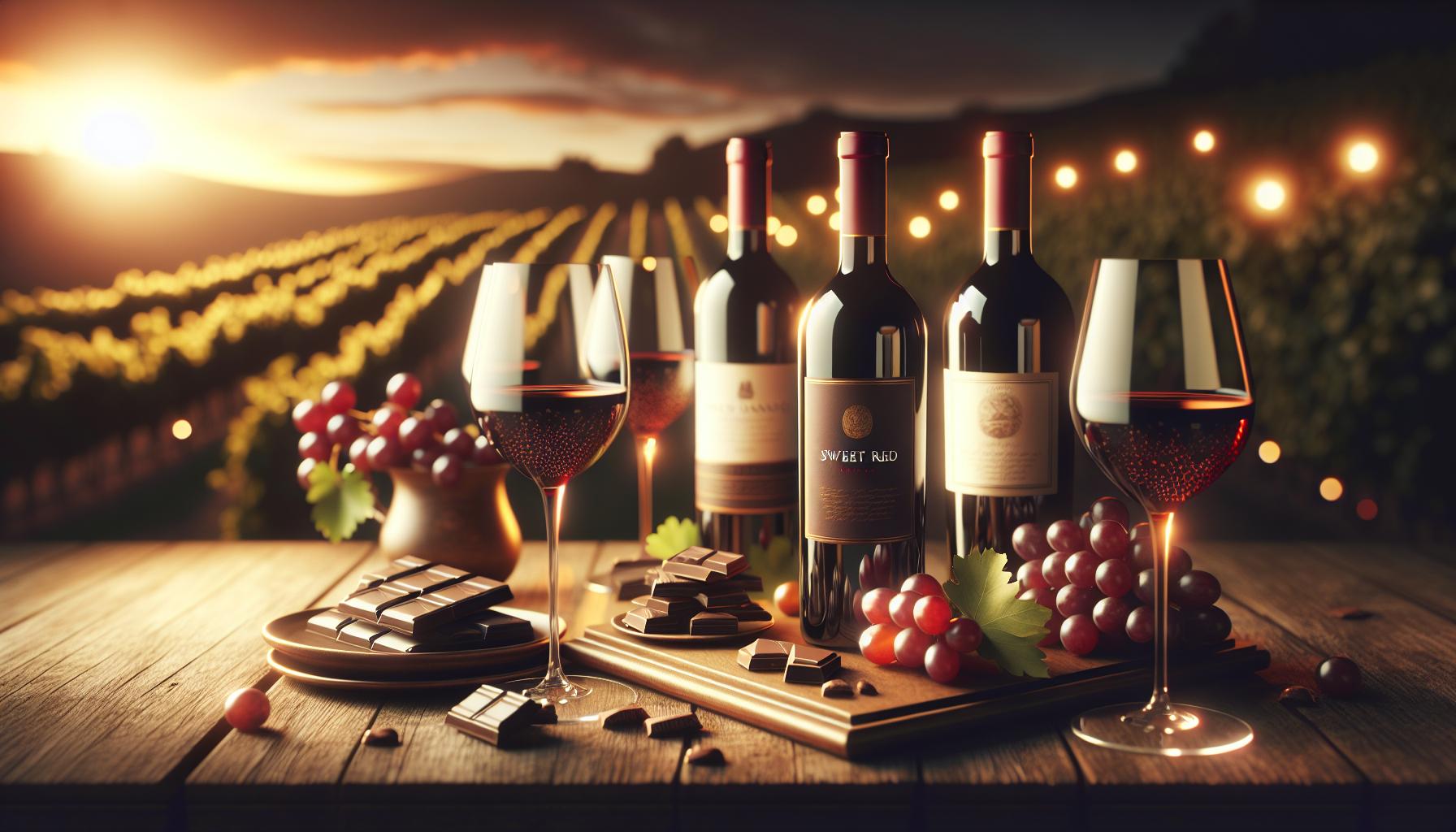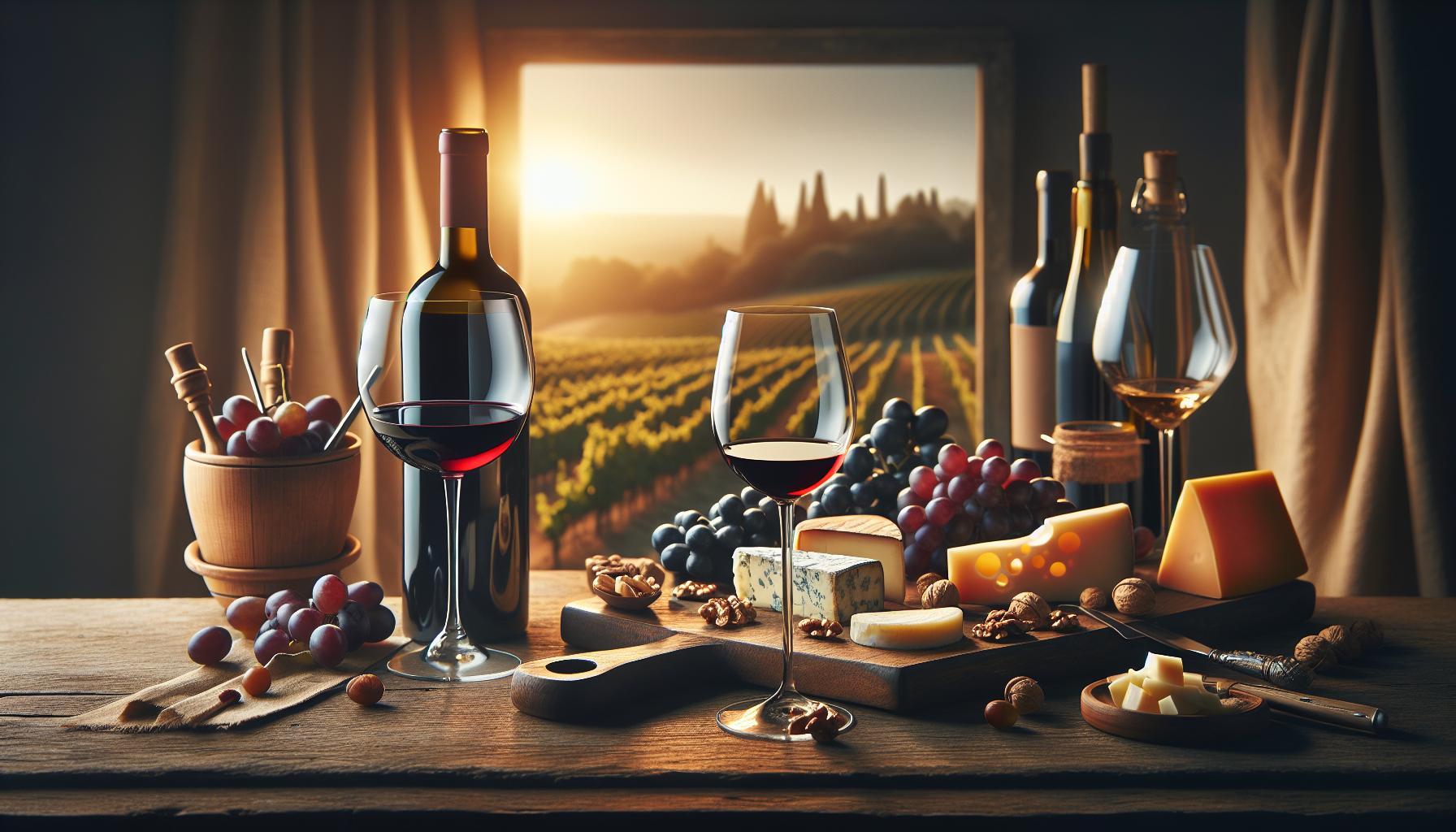Wine is a fascinating beverage that occupies a unique place in our social and culinary landscapes. But is wine considered liquor? This question not only sparks curiosity but also dives into the broader distinctions between different types of alcoholic beverages. As we explore the definitions, classifications, and cultural implications of wine and liquor, you’ll gain clarity on this nuanced topic.
Understanding whether wine falls under the umbrella of liquor helps you make informed choices in social settings-whether for special celebrations, casual gatherings, or simply selecting the perfect bottle for dinner. Join us as we unravel the characteristics that define these beloved drinks, and discover how this knowledge can enhance your appreciation and enjoyment of wine throughout your journeys.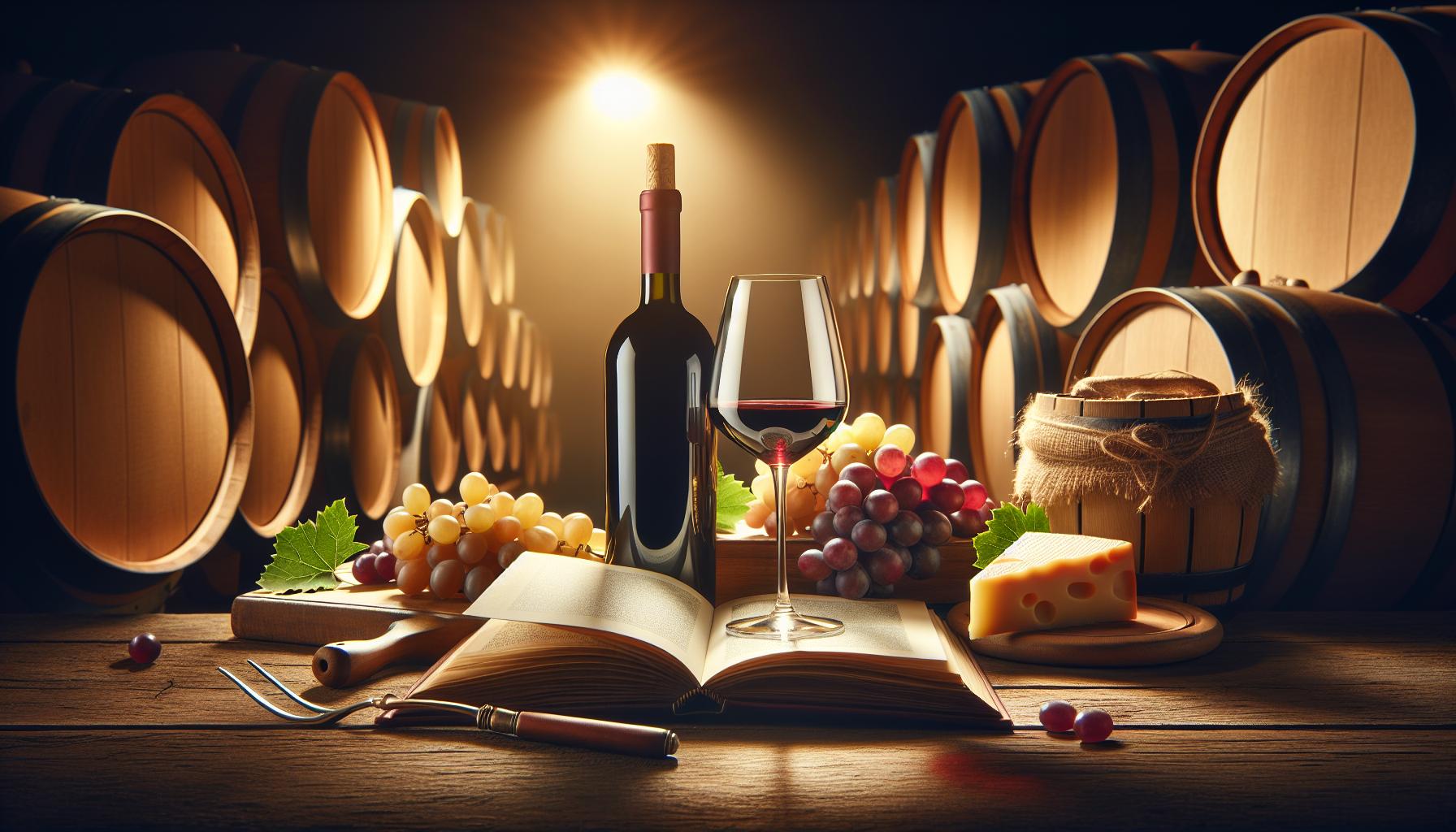
Is Wine a Type of Liquor? Understanding the Basics
Wine holds a unique position within the spectrum of alcoholic beverages, often sparking debate about its classification in relation to liquor. To appreciate the richness of this discussion, it’s essential to recognize that while both wine and liquor are alcoholic drinks, their production processes, alcohol contents, and the cultural experiences they embody can differ dramatically.
At its core, wine is a fermented beverage made from grapes or other fruits. The fermentation process transforms natural sugars from these fruits into alcohol, yielding a drink that historically symbolizes celebration, rituals, and communal bonding. Contrast this with liquor, which encompasses a range of distilled spirits such as whiskey, vodka, and gin. These beverages undergo a secondary process-distillation-that increases their alcohol content significantly, typically around 40% or more, as opposed to wine’s typical alcohol by volume (ABV) ranging from 8% to 15%.
Understanding the nuance in this classification enhances our appreciation for both categories. For instance, a glass of Apothic Red, a bold California blend featuring a harmonious mix of merlot, cabernet sauvignon, syrah, and zinfandel, invites drinkers into a realm where flavors like black cherry and vanilla dance upon the palate. In contrast, a neat pour of whiskey can deliver a different kind of warmth, rich in complexity and defined by its oak barrel aging.
Thus, when contemplating whether wine fits neatly into the liquor category, it becomes clear that wine isn’t merely an alcoholic drink-it’s also a vessel of culture, history, and human connection, representing more than just its alcohol content or production method. By exploring the distinctions and interactions between wine and liquor, we embark on a deeper sensory journey, engaging with beverages that are celebrated not only for their intoxication but also for their ability to forge memories, communal experiences, and a sense of belonging.
The Alcohol Content of Wine vs. Liquor
Wine, often seen as the gentle giant of the alcohol world, showcases a fascinating spectrum of alcohol content that sets it apart from spirits, or liquor, which are typically more potent. While the average alcohol by volume (ABV) of wine hovers between 8% to 15%, liquors like vodka or whiskey usually range from 35% to 50%. This significant difference stems from their respective production processes-wine undergoes fermentation, while liquor is distilled. It’s this distillation that concentrates alcohol, extracting flavors and aromas that come with an intensity that wine, by design, cannot replicate.
Understanding this variance in alcohol content allows for a multi-dimensional appreciation of both beverages. An afternoon spent savoring a crisp Sauvignon Blanc, with its zesty notes of citrus and grass, contrasts sharply with an evening warming sip of high-proof bourbon, where rich caramel and vanilla linger on the palate. These experiences highlight not only different levels of intoxication but also different culinary uses and cultural roles, making it essential to approach them with a discerning touch.
Moreover, the effect of alcohol content on the perception of taste is intriguing. A lower ABV wine might invite leisurely sipping and conversation, while a higher ABV spirit might command more attention, often being savored in smaller quantities. Understanding the context of these drinks-be it a celebratory toast with sparkling wine or a quiet nightcap with whiskey-enhances their appreciation and represents the nuances present in the world of intoxicating beverages.
In social settings, the choices between wine and liquor can become a reflection of one’s mood, the ambiance, and even the dining options available. For example, a lively dinner party may see guests relishing in a harmonious pairing of rich red wines and hearty dishes, while the same gathering could shift to a cocktail hour, where the complexities of aged rum or carefully crafted gin cocktails take center stage. Understanding the alcohol content and its implications enriches these social interactions, allowing for a thoughtful approach to both what we drink and how we experience it together.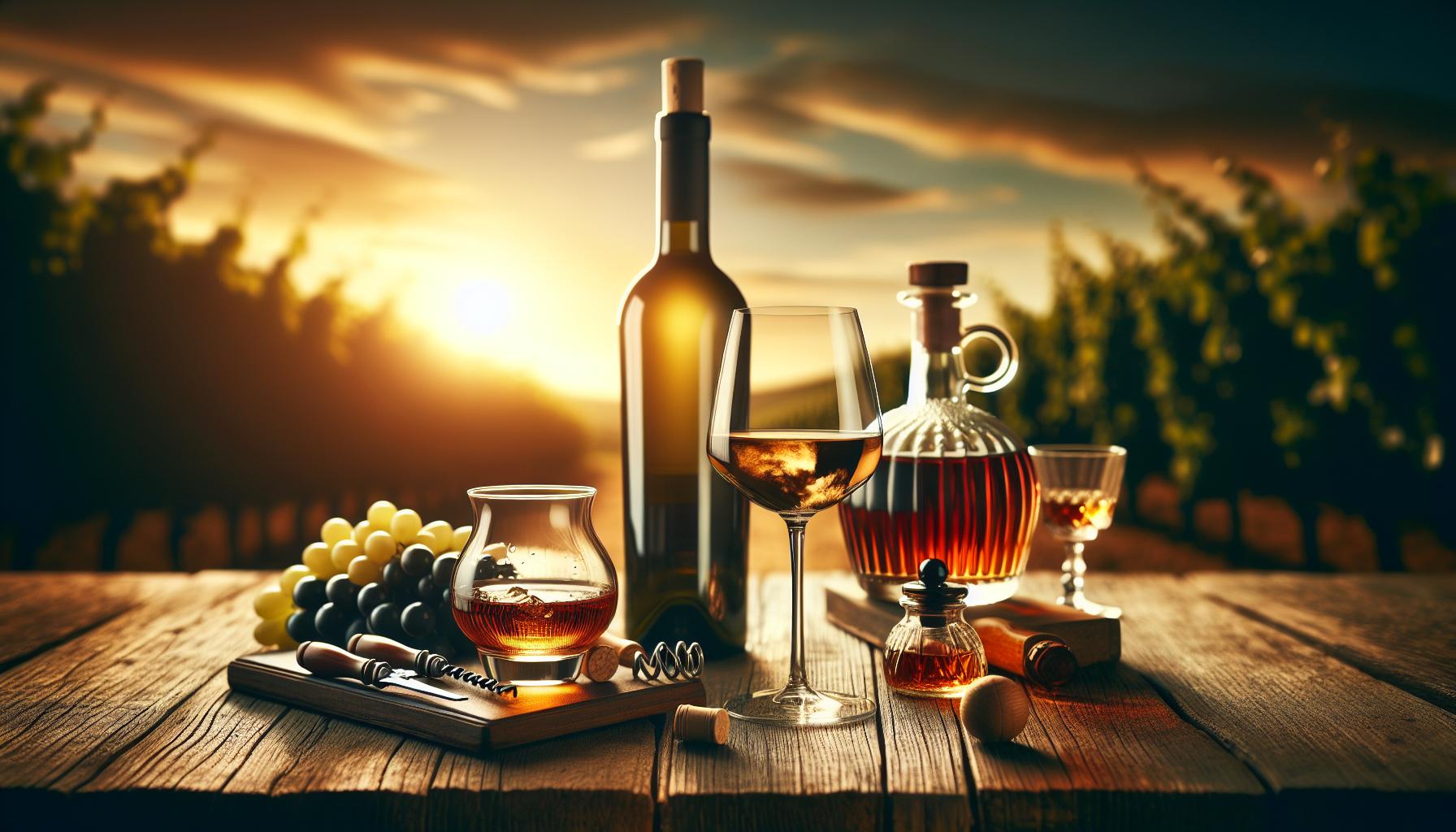
Exploring the Types of Liquor: What Sets Them Apart
The world of liquor is as diverse and captivating as the grapes that give rise to fine wines. Spirits, distilled rather than fermented, open a treasure trove of unique characteristics and intricate production methods, each bringing something distinctly different to the table. Understanding these distinctions helps not just in appreciating each beverage but in enhancing the experience of pairing them with food or enjoying them alone.
At the heart of liquor categorization lies its primary ingredient and production process. For instance, vodkas are famously neutral spirits, often distilled from grain or potatoes, and are typically enjoyed as mixers or served chilled. Their smoothness invites creative cocktail crafting-notably, the classic Moscow Mule, which balances the vodka’s subtleness with the zing of ginger beer and a splash of lime. Contrasting markedly with vodka is whiskey, which bears a rich tapestry of flavors shaped by the grains used, the fermentation, and their time spent aging in charred oak barrels. Each whiskey has a story to tell; a Kentucky bourbon boasts sweetness from corn, while a peaty Scotch can transport one to the rugged Scottish Isles, echoing the flavors of the land.
Beyond grains, liquor also embraces fruit-based spirits like gin and rum. Gin captures the essence of juniper berries and a variety of botanicals, making it an exquisite base for cocktails like the iconic Gin and Tonic, where the floral notes meld beautifully with the tonic’s brightness. Rum, derived from sugarcane, offers a taste of the tropics, ranging from light versions that dance on the palate to more robust rums infused with caramel and spices, perfect for sipping by the beach or in a classic Daiquiri.
Moreover, the art of distillation not only creates higher alcohol content but concentrates flavors in a way that wine’s fermentation does not. While a fine Merlot may swirl with notes of plum and cedar, a well-crafted spirit can explode with unrestrained intensity, inviting aficionados to explore its complex layers. This versatility makes liquor an integral part of numerous cultures worldwide. Whether it’s enjoying tequila in the vibrant streets of Mexico or sipping fine cognac after dinner in France, each spirit carries with it the heritage and traditions of its region.
In essence, the exploration of liquor invites us to celebrate the craftsmanship behind these beverages. As we dive into the rich narratives of vodka, whiskey, gin, rum, and more, we unlock not only flavors but also cultures, histories, and connections-echoing the sentiments often found in a glass of fine wine. The journey from vineyard to distillery enriches our appreciation of all alcoholic beverages, urging us to savor each sip while engaging in the rituals that bring us together.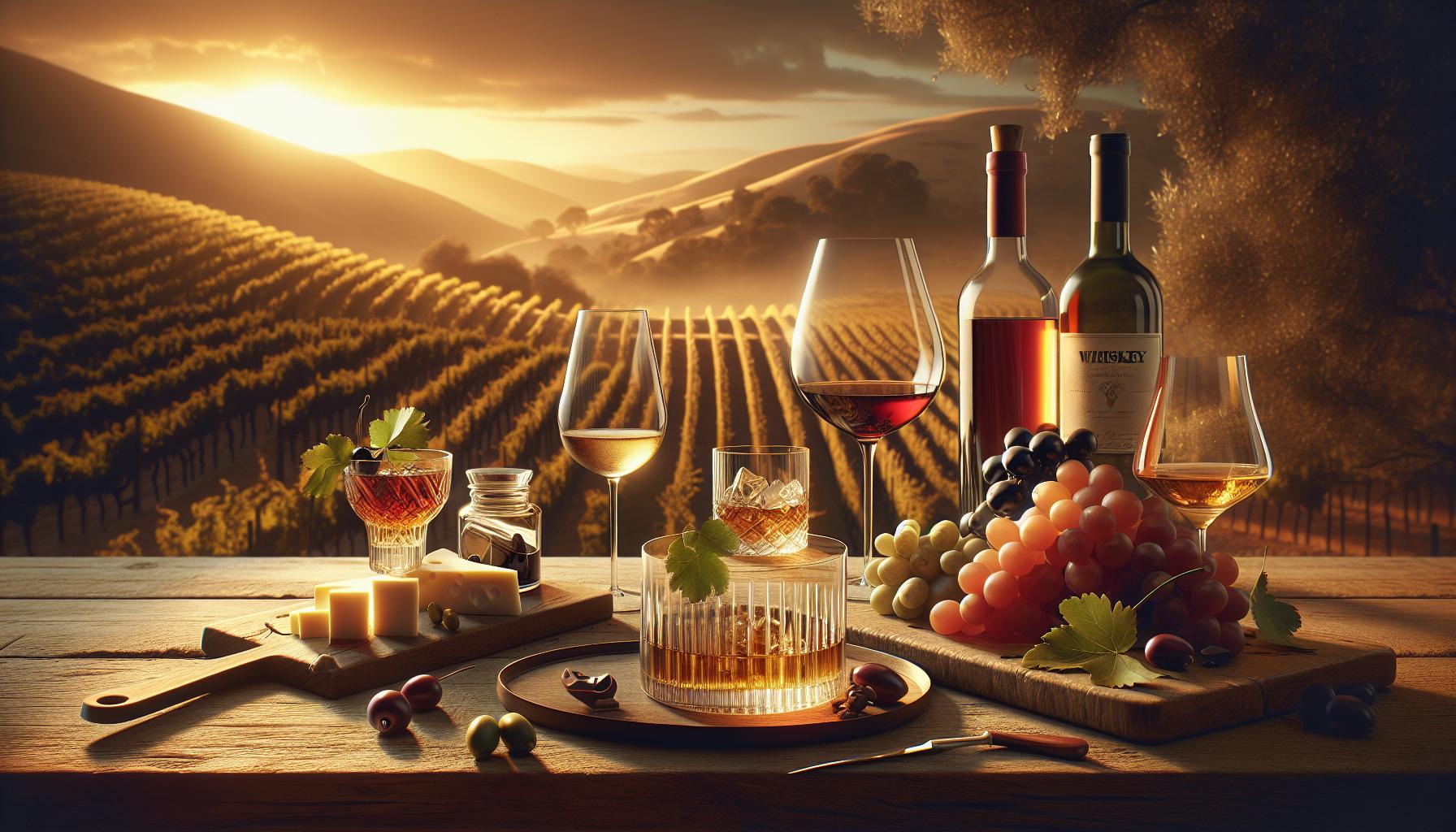
Cultural Perspectives: Wine in Different Regions
In the timeless dance between culture and wine, each sip tells a story as varied as the regions from which it hails. From the sun-kissed vineyards of California to the rolling hills of Tuscany, the production of wine is deeply embedded in the rituals, traditions, and flavors of specific locales. Across the globe, wine is not merely an intoxicating beverage; it represents heritage, communal gatherings, and the unique interplay between mankind and nature.
Cultural Significance and Traditions
In Italy, wine is intricately woven into the fabric of daily life and celebration. The tradition of pairing wine with food is not just a culinary practice but a sacred ritual. The legendary Chianti, with its cherry and leather notes, becomes even more delightful when enjoyed alongside a rustic pasta dish or a hearty steak. Families often gather around the table, engaging in heartfelt conversation and laughter, with a bottle of their favorite red facilitating their connection. It’s a testament to the Italian ethos that “a meal without wine is like a day without sunshine.”
Meanwhile, France takes pride in its centuries-old winemaking heritage, where regions like Bordeaux and Burgundy are steeped in meticulous craftsmanship. Each bottle embodies the terroir- the unique climate, soil, and grape varietal- that imparts distinctive characteristics to the wine. The French approach wine as an art form, emphasizing quality over quantity. Visiting a vineyard in Bordeaux reveals a landscape dotted with ancient châteaux, where the reverence for tradition and meticulous techniques converge, inviting enthusiasts to appreciate the essence of decanting a fine vintage that reflects its birthplace.
Rituals and Celebrations
Across the ocean, South America boasts a spirited enthusiasm for wine, with Argentina as a shining star in the Malbec scene. The culinary tradition of asado, a barbecue that features slow-cooked meats, finds its perfect counterpart in a bold Malbec, which dazzles the palate with dark fruit flavors and spicy undertones. Social gatherings here often revolve around the shared joy of food and wine, where the act of pouring a glass becomes an invitation to engage and connect.
In contrast, the ancient winemaking practices in regions like Georgia provide a glimpse into how culture, history, and land coalesce. Known as the cradle of wine, Georgia uses traditional qvevri (large clay vessels) for fermentation, offering a direct link to a heritage that spans over 8,000 years. The process is more than just a method; it’s a cultural celebration that encompasses rituals passed down through generations, illustrating how wine is a vessel for both nourishment and storytelling.
Diverse Expressions of Wine
No matter the region, each expression of wine is an invitation to delve into the essence of what it means to share a moment, celebrate an achievement, or simply enjoy the beauty of life. Wine becomes a bridge between cultures and generational ties, enriching gatherings with laughter, stories, and reflections. Losing oneself in the world of wine opens a door to understand and appreciate the layered narratives of human experience and connection that have emerged alongside its fermentation.
Through this exploration, one can recognize that understanding wine is not merely about appreciating its taste but also embracing the diverse cultural landscapes it inhabits. Whether savoring the complex aromas of a Napa Valley Cabernet or the simplicity of a summertime rosé from Provence, each moment with wine becomes a celebration of life, love, and the irreplaceable bonds that form over a shared glass.
The Science of Fermentation: How Wine is Made
The journey from grape to glass is a captivating metamorphosis, one that embodies both art and science. At its core, the transformation of grape juice into wine hinges on the delicate process of fermentation, where nature’s tiniest organisms create complex flavors and aromas that dance across the palate. At the start of this process, healthy, ripe grapes are harvested-often at dawn when they are still cool-to preserve their delicate sugars and acids. These grapes are then crushed to extract the juice, setting the stage for the magical alchemy that follows.
Fermentation occurs when yeast, either cultivated or wild, interacts with the sugars present in the grape juice. As the yeast consumes the sugar, it produces alcohol and carbon dioxide, with the typical fermentation process taking anywhere from several days to weeks. This stage is essential not just for producing alcohol; it also determines the wine’s fundamental qualities-its sweetness, acidity, and mouthfeel. The choice of yeast can influence the final wine significantly, leading to variations in taste profiles and aromas, which is why winemakers often prefer specific strains for their unique characteristics.
The Role of Temperature and Time
The conditions under which fermentation occurs play a crucial role in shaping the wine’s personality. Temperature control during fermentation is vital, as it affects the rate of fermentation and the development of various compounds. Cooler fermentation temperatures can yield wines with bright, fruity aromas, while warmer conditions tend to enhance richer, spicier notes. During this phase, winemakers must balance patience and observation. Often, they will stop the fermentation at a desired level of sweetness, resulting in a range of styles from crisp, dry whites to lush, sweet dessert wines.
Malolactic Fermentation and Beyond
Once the primary fermentation concludes, many red wines undergo a secondary process known as malolactic fermentation (MLF). This process transforms sharper malic acid into softer lactic acid, contributing to a rounder mouthfeel and adding complexity to the aroma profile. It’s particularly appreciated in varietals like Chardonnay, where it can infuse buttery notes that complement the fruit’s natural characteristics.
Following these fermentative transformations, the nascent wine awaits clarification and stabilization before bottling. This is where decisions regarding aging come into play. Some wines are bottled fresh to preserve their vibrancy, while others are aged in oak barrels to impart additional flavors and textures. The interaction with wood can produce hints of vanilla, toast, or spice, further enriching the wine’s narrative.
Every sip of wine is a testament to this intricate process, reflecting the choices made along the way-from vine to bottle. This harmonious blend of science and artistry invites appreciation beyond mere consumption; it beckons us to engage with the story woven into each glass, celebrating the earth’s gifts and the hands that shape them into a beloved beverage that has transcended centuries and cultures.
Aging Gracefully: The Role of Terroir in Wine
The notion of terroir is akin to the DNA of wine-intangible yet profoundly influential. It embodies the unique intersection of geography, geology, climate, and human elements that collectively shape the character of a wine. When we delve into what makes a specific wine taste distinctly of its place, we are essentially uncovering the influence of terroir. Imagine sipping a glass of Cabernet Sauvignon from Napa Valley, where sun-drenched hills impart a luxury of ripe, luscious fruit, and then tasting a comparable varietal from Bordeaux, where the cooler climate and clay-limestone soils lend a more restrained, earthy quality. This contrast is the essence of terroir at work, cradling within it a map of the vineyard’s history and the nature of the land it thrives upon.
In practical terms, terroir comprises several crucial factors, including the soil composition, topography, climate, and even the cultural practices employed by vignerons. For instance, the vineyards of Burgundy, known for their pinot noir, are situated on slopes that benefit from both sunlight and drainage suited to this delicate grape. Each plot has its own microclimate, and thus, wines from adjacent parcels can express dramatically different flavor profiles-an expression of the land’s diversity that is celebrated by wine lovers and critics alike.
The Dance of Climate and Soil
When considering aging, the role of terroir becomes even more pronounced. A wine’s aging potential is not solely determined by the grape variety; rather, it is also influenced by the terroir that nurtured it. For example, wines born from well-drained soils typically exhibit heightened acidity, which acts as a natural preservative as they mature. On the other hand, wines from heavier, nutrient-rich clays may develop richer, more opulent flavors over time. Understanding this interplay can grant you deeper appreciation as you taste your way through diverse expressions of the same varietal from various origins.
Furthermore, a wine’s ability to evolve gracefully in the bottle is often linked to its terroir. Wines from regions with pronounced temperature swings between day and night-like those found in high-altitude vineyards-tend to showcase vibrant acidity and complex flavor development over time. The careful balance of sugar and acid developed during the growing season plays a pivotal role in this aging process, allowing such wines to unfold their layers over decades, transforming from youthful exuberance to refined elegance.
In essence, as you explore the world of wine, consider each sip a veteran storyteller, narrating the tale of its origins. The philosophy of terroir invites contemplation: each glass is a unique reflection of its environment, a portrait of the land, and a celebration of the synergy between nature and human artistry. The act of tasting wine, then, becomes not merely a sensory experience but rather a profound journey through time and place-one that connects us to the earth and enriches our understanding of this age-old beverage that continues to weave its charm through the fabric of culture.
Tasting Wine: A Sensory Journey Beyond the Bottle
Engaging with wine transcends beyond mere consumption; it invites a delightful journey that activates our senses and spirits. Imagine stepping into a vineyard, surrounded by sun-drenched grapes ripening in the warmth of the day. Each varietal harbors its unique story, waiting to unfold not just in taste, but also through aroma, texture, and color as it touches your lips. Tasting wine is both an art and a science, an intricate pairing of sensory perception and mindful exploration.
To begin your sensory adventure, focus on the visual aspect of the wine. Observe its color, clarity, and viscosity as you swirl it gently in your glass. A deep ruby red might suggest a younger wine filled with vibrant fruit, while a golden-hued white could indicate age and complexity. But don’t stop there; lean in and savor the aroma. Inhale deeply, allowing the bouquet to reveal itself: florals, fruits, spices, and earthiness may waft through the air, beckoning you to explore their layers. The olfactory experience is often described as a prelude; it prepares the palate for the flavors yet to come and enriches the overall tasting.
When the moment arrives to sip, let the wine rest on your tongue, allowing your taste buds to dance with its complexities. Here, you can discern the fundamental flavors and textures, whether it’s a crisp acidity of a Sauvignon Blanc or the velvety richness of a Merlot. This interaction-with its balance of sweetness, acidity, and tannin-serves as your invitation to reflect on what makes this particular bottle resonate with you. Consider making notes on your impressions, building a personalized tasting journal that chronicles your evolving preferences.
Moreover, as you explore the interplay of textures-from the light, refreshing fizziness of bubbly to the silkiness of a well-aged red-contemplate how each wine fits within broader culinary venues. Perhaps pairings with cheese, chocolate, or a hearty dish can prompt you to consider why certain wines enhance flavors while others may compete. It’s all part of a vibrant tapestry where personal enjoyment, culture, and history intertwine, making each tasting an odyssey through shared human experience. Embrace this connection, and allow wine tasting to be not just about the beverage itself, but the journey it offers.
Wine vs. Liquor in Cocktails: Mixing Lessons
The dance between wine and liquor in cocktails offers a fascinating glimpse into the artistry of mixology and the versatility of both beverages. Wine, often celebrated in its own right, can be a delightful addition to cocktails, bringing a unique depth and character that can elevate a drink from the ordinary to the extraordinary. For instance, consider the classic Wine Spritzer-an elegant fusion of crisp white wine, sparkling water, and a splash of citrus, creating a light and refreshing beverage that is perfect for warm afternoons.
When integrating wine into cocktails, it is essential to understand its inherent qualities. Still wines, with their diverse flavors and aromas, can create beautifully layered cocktails. A rosé, with its notes of red fruits and floral hints, harmonizes wonderfully with fresh ingredients like muddled berries or herbs. On the other hand, a robust red, such as a Cabernet Sauvignon, can lend its tannic structure and bold flavors to richer cocktails, often paired with spirits like bourbon or whiskey. This layering not only enhances the complexity of the drink but also showcases the character of the wine itself.
Crafting cocktails that incorporate wine invites creativity and experimentation. Consider the classic Sangria, where red wine mingles with fruits, brandy, and a hint of sweetness, transforming a simple bottle into a festive concoction that celebrates culture and conviviality. Alternatively, the incorporation of sparkling wines into cocktails can add an effervescent twist. A Bellini, combining Prosecco with peach puree, illustrates how the lightness of sparkling wines can bring joy and a celebratory spirit to any gathering.
Ultimately, the key to successful cocktails that feature wine lies in balance. Recognizing the differences in alcohol content and flavor profiles between liquor and wine can guide decisions on proportions and ingredient pairings. By carefully considering these elements, you can create cocktails that honor the distinct characteristics of both wine and liquor, ensuring that each sip is a harmonious exploration of taste. Embrace the mixing lessons offered by this intersection of beverages, and let your palate guide your choices as you navigate the delightful world of cocktails.
Pairing Wine and Food: A Culinary Art
The allure of wine lies not just in its complex flavors and aromas but in its remarkable ability to enhance the culinary experience. Pairing wine with food is akin to a delicate dance where both partners-the wine and the dish-can elevate each other to superb heights. Imagine sipping on a crisp Sauvignon Blanc while enjoying a goat cheese salad; the zesty acidity of the wine complements the richness of the cheese, creating a balance that tantalizes the taste buds. This harmony speaks not only to palate pleasures but also to cultural traditions that span across continents.
Understanding the nuances of pairing starts with the fundamental characteristics of both the wine and the food. Here are some key considerations to keep in mind:
- Wine Body and Food Weight: Light dishes like salads and seafood often pair well with lighter wines such as Pinot Grigio or Riesling, while heartier meals, like steaks, call for full-bodied reds such as Cabernet Sauvignon or Malbec.
- Flavor Profiles: Matching flavors can enhance the overall experience. For instance, a rich, buttery Chardonnay complements a creamy pasta, while a high-acid wine like Chianti can cut through the fat of a rich Bolognese sauce.
- Seasonality and Local Pairings: Consider the time of year and regional cuisines. A barbecue feast may be best accompanied by a fruit-forward Zinfandel in summer, while a cozy, spiced mulled wine is perfect for winter gatherings.
Wine appreciation is an intricate art that invites us to engage with our food and drink at a deeper level. Each pairing encourages exploration and experimentation, a journey into the varied landscapes of flavor. The beautiful unpredictability of wine means that a dish paired with an unexpected choice can lead to delightful surprises. A bold Shiraz might just be the perfect companion to spicy Thai cuisine, offering a refreshing contrast that enhances the flavors rather than overshadowing them.
In essence, enjoying wine with food transcends the mere act of consumption; it becomes a shared moment of connection-be it at a lavish dinner party or a casual weeknight meal. It’s about the joy of discovery, finding that perfect blend that complements one’s own tastes and preferences. So whether you’re a novice seeking guidance or an aficionado ready to experiment, remember: the best pairings often emerge from curiosity and a willingness to explore. Let each meal be an opportunity to savor not only the food and wine but also the stories they tell together.
Health Benefits of Wine Compared to Liquor
In the ongoing conversation about alcohol, a debate often surfaces: what are the health benefits of wine versus liquor? While the nuances of each category can be profoundly enriching to explore, it’s crucial to note that both wine and liquor, when consumed in moderation, offer different advantages. However, wine, particularly red wine, has garnered attention for its unique compounds that can promote health. For many enthusiasts, this makes it more than just a beverage-it’s a cultural phenomenon steeped in history and celebration.
To start, red wine contains resveratrol, a potent antioxidant found in grape skins that has been linked to a reduced risk of heart disease. Studies suggest that resveratrol may help to increase levels of high-density lipoprotein (HDL) cholesterol while protecting against artery damage. In addition, wine’s polyphenols-specifically flavonoids-may also contribute to heart health by helping to reduce blood pressure and inflammation, offering a cardiovascular shield that liquor typically doesn’t match. While liquor often consists solely of distilled alcohol with minimal beneficial compounds, wine carries a complex tapestry of flavors and health-promoting elements.
However, moderation is key. The health benefits of wine become apparent with a modest intake; for many, this translates to about one glass daily for women and up to two for men. Not only does this approach retain the positive effects, but it also leaves space for the enjoyment of its sensory experiences-each sip revealing diverse notes and textures that connect the drinker to vineyards across the world. Liquor, in contrast, carries a higher alcohol content per serving, which can overshadow any potential benefits when consumed without caution.
Mindful Consumption
Approaching alcohol with mindfulness can enhance its benefits while minimizing risks. Here are practical tips for integrating wine into a healthy lifestyle:
- Choose Quality Over Quantity: Opt for well-crafted wines that reflect the care of their producers-this not only enhances taste but may also contribute to the overall experience of enjoying wine.
- Engage Your Senses: Take time to appreciate the color, aroma, and taste of your wine. This meditative practice deepens your enjoyment and helps regulate consumption.
- Pair Thoughtfully: Consider the nutritional profiles of the foods you enjoy with your wine. Full-bodied red wines pair beautifully with lean meats or rich vegetable dishes, creating a balanced meal.
Ultimately, whether one prefers wine or liquor, fostering a connection to the drink-understanding its origins, the process of its creation, and the community it supports-can elevate the experience beyond mere consumption. As we quench our thirst with these age-old beverages, it’s the stories we share and the connections we cultivate that truly enrich our lives.
Wine Myths Debunked: Common Misunderstandings
Wine is an intricate tapestry of culture, science, and pleasure, yet it often finds itself surrounded by a veil of myths and misunderstandings. One prevalent myth is the notion that wine is simply a type of liquor. While both fall under the broader umbrella of alcoholic beverages, they differ significantly in composition and production process. Wine is primarily fermented from grapes or other fruits, retaining a bevy of flavors, aromas, and beneficial compounds, whereas liquor is distilled, leading to higher alcohol concentration and a more straightforward flavor profile. This misunderstanding often leads to oversimplified pairings and expectations regarding consumption.
Another common misconception is that all wines are low in alcohol content. This belief undervalues the diversity within the category. While many wines contain around 12-14% alcohol by volume (ABV), certain varietals, particularly bold reds like Zinfandel and some dessert wines, can reach upwards of 15-20% ABV. This variation can influence tasting experiences and food pairings, not to mention the overall health impacts of indulgence. Understanding these distinctions can empower consumers to make informed choices about their beverage selections, enhancing both enjoyment and safety.
Many also assume that wine is always healthier than liquor. While wine, particularly red wine, contains beneficial compounds such as resveratrol and flavonoids that can promote cardiovascular health, the advantages depend on moderation. Over-consumption can negate these benefits and lead to an array of health issues similar to those caused by liquor. Thus, a mindful approach to wine consumption not only respects the drink but also aligns with an overall healthy lifestyle.
Lastly, there’s the perception that wine tasting is exclusively elitist, detached from everyday enjoyment. In truth, wine invites an array of experiences accessible to all, no matter their background. Wine tastings can be intimate gatherings focused on joy and discovery rather than posturing or exclusions, where the exploration of flavors leads to enriched conversations and deeper connections with others. Embracing wine as part of a shared human experience can dissolve the barriers often misconceived within wine culture, opening the door to creativity in combination with the senses.
In sum, dispelling these myths encourages a more nuanced appreciation of wine, inviting enthusiasts-seasoned and novice alike-to delve deeper into this fascinating world, one sip at a time.
The Social Significance of Wine Through History
Throughout history, wine has transcended its role as merely a beverage; it has become a potent symbol of social interaction, cultural identity, and the human experience. From the ancient Greeks, who revered Dionysus as the god of wine and festivities, to the sprawling vineyards of the Napa Valley that represent both earthly labor and creative artistry, wine has woven itself into the fabric of societies worldwide. It serves not just to quench thirst but to mark moments of celebration, solemnity, and connection.
Consider the communal nature of wine consumption across cultures. In Mediterranean regions, meals are often centered around shared bottles of wine, fostering conversations that stretch late into the night. In France, the ritual of savoring wine with food becomes an act of reverence-an expression of terroir, an embodiment of the land from which it comes. This practice underscores the idea that wine is not simply an alcoholic beverage but a bridge that connects people, invites storytelling, and deepens relationships. As wine flows, barriers dissolve, allowing for a shared appreciation of life’s pleasures and complexities.
Moreover, wine has played a crucial role in significant historical events, often serving as a catalyst for change and reflection. The Loire Valley’s vineyards have witnessed the rise and fall of empires, while bottles of Bordeaux have been used as tokens of diplomacy among world leaders. In times of strife, wine has provided comfort, embodying resilience and continuity in shared rituals. Even in modern contexts, events like wine tastings and harvest festivals not only celebrate the bounty of the earth but also reinforce community bonds amidst the busyness of contemporary life.
As we explore the social significance of wine, it is essential to recognize its multi-faceted identity. Not merely a drink, wine is intertwined with human stories, cultural traditions, and moments of intimacy. Whether it’s a simple gathering among friends or a grand celebration, the act of sharing wine is a timeless gesture that connects us to our humanity. So the next time you pour a glass, take a moment to appreciate not just the flavors of the wine but the rich tapestry of history and culture it represents, inviting all who partake to pause, reflect, and enjoy the present moment.
Faq
Q: Is wine considered liquor?
A: Wine is not classified as liquor; it is a type of fermented beverage with a lower alcohol content compared to liquor. While both contain alcohol, liquor refers to distilled spirits, such as whiskey or vodka, which usually have a higher alcohol by volume (ABV) than wine.
Q: What are the key differences between wine and liquor?
A: The main differences between wine and liquor lie in the fermentation and distillation processes. Wine is fermented from grapes or other fruits, while liquor is distilled, which concentrates the alcohol. Additionally, wine typically has an ABV of 9-16%, whereas liquor usually exceeds 20%.
Q: Why do some people group wine with liquors?
A: Some people may refer to wine as liquor due to its alcoholic content. However, this classification overlooks the crucial differences in production and alcohol concentration. Understanding these distinctions can enhance appreciation for each beverage’s unique characteristics.
Q: Can wine be mixed with liquor?
A: Yes, wine can be combined with liquor in cocktails, such as wine spritzers or sangria. Mixing can create delightful flavors, but be mindful of the overall alcohol content when combining different spirits for responsible consumption.
Q: How is the alcohol content in wine measured?
A: The alcohol content in wine is measured as a percentage of alcohol by volume (ABV). Most wines have an ABV of 9-16%, which indicates the proportion of alcohol relative to the volume of liquid, influencing the wine’s intensity and flavor profile.
Q: What is the alcohol content comparison between wine and spirits?
A: Wine generally has an ABV of 9-16%, while spirits like vodka or whiskey typically range from 20-50% ABV. This significant difference affects how each is enjoyed and its effects on the body, highlighting their distinct roles in alcoholic beverages.
Q: Are there any health benefits to drinking wine compared to liquor?
A: Moderate wine consumption, especially red wine, has been linked to certain health benefits, such as heart health, due to antioxidants like resveratrol. Liquor, consumed excessively, tends to have fewer associated benefits and greater health risks, underscoring the importance of moderation.
Q: When is it appropriate to serve wine versus liquor?
A: Wine is typically served during meals or social gatherings, often paired with food to enhance flavors. Liquor is more common in cocktails and as an after-dinner drink. Choosing between the two depends on the occasion and desired ambiance.
For more exploration on the nuanced world of wine, dive into our detailed sections on tasting notes and varietal differences in our main article. Enjoy discovering the rich tapestry that wine weaves through culture and history!
Insights and Conclusions
As we uncork the rich complexities of our exploration into whether wine is classified as liquor, it’s clear that this beloved beverage holds a unique place in our hearts and cultures. With its alluring aromas and diverse palate profiles, wine is not merely a drink; it’s a tapestry of history, tradition, and shared experiences. Now that you’re equipped with the knowledge of its distinctive qualities, consider diving deeper into our articles on “The Art of Wine Tasting” and “Understanding Wine Pairings” to enhance your appreciation even further.
Remember, every glass of wine tells a story-whether it’s the whisper of its terroir or the laughter shared among friends. Don’t let this moment linger; explore our curated selection of wines here, and join our newsletter for exclusive insights and offers. Your journey into the world of wine awaits, rich with flavors and connections ready to be discovered. Join the conversation below-share your thoughts, questions, or favorite wines, and let’s toast to the continuing adventure!

